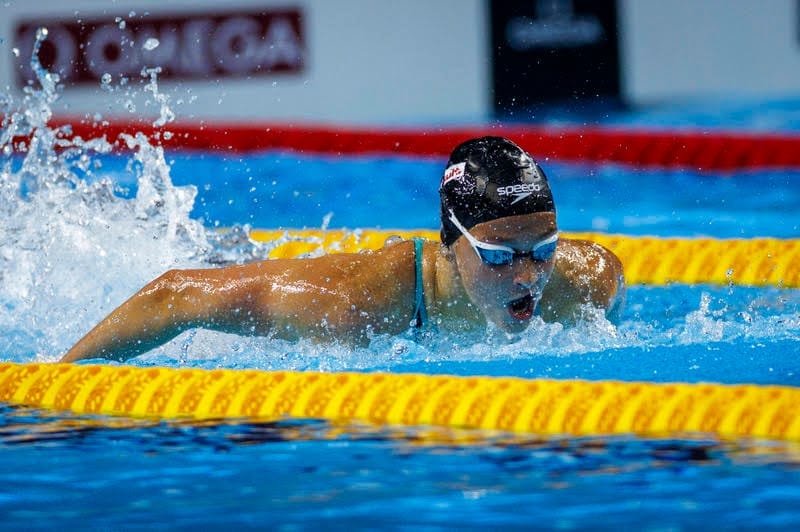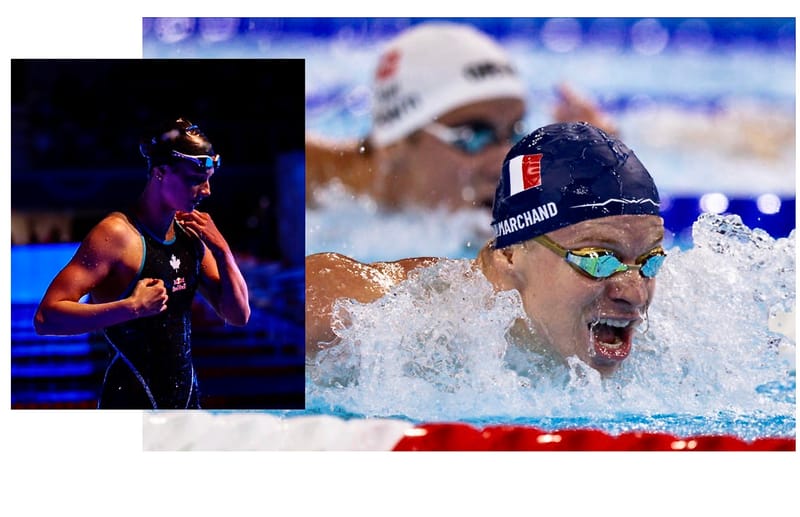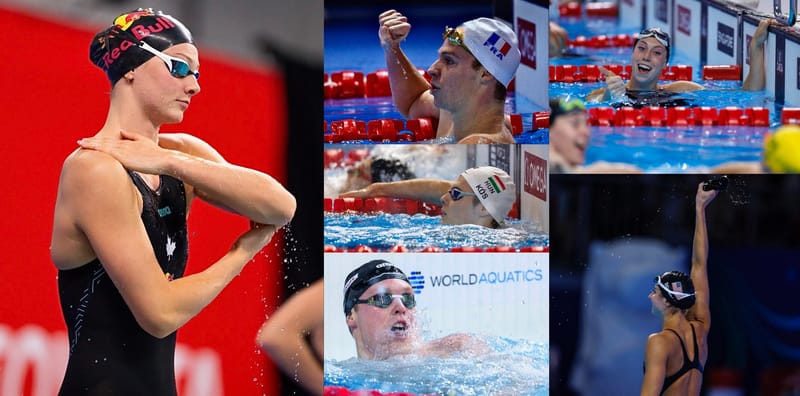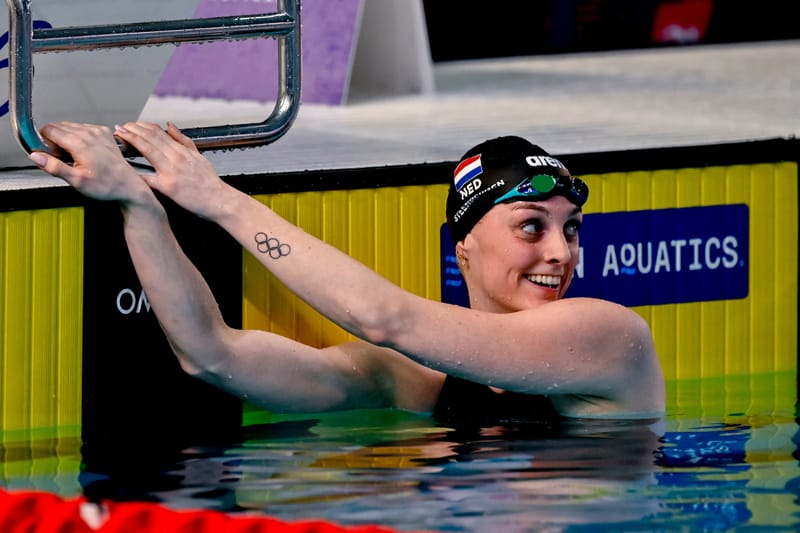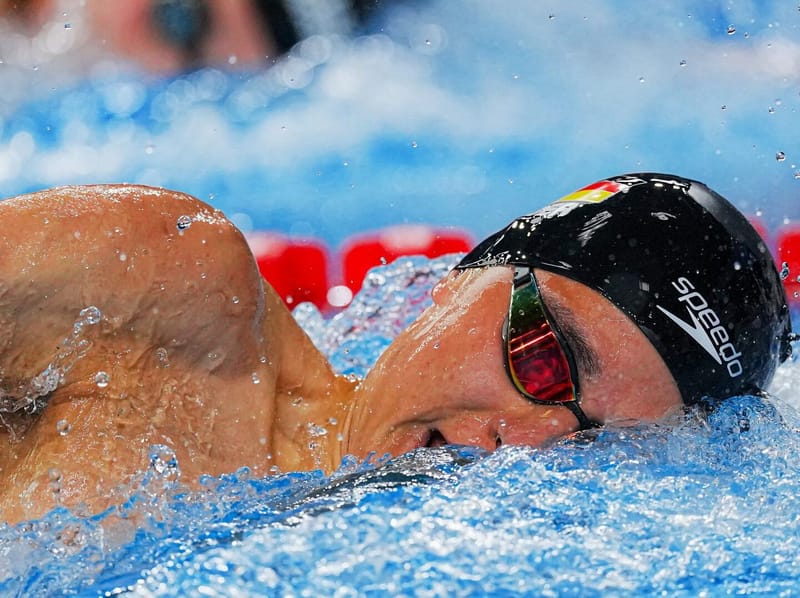Liu's 2:01 Shiny Suit WR In 200 'Fly Turns 16 Today, Masking 3 Global Marks McIntosh Might Have Had
There are many forms of manipulation in sport, including some allowed for a short time. Shiny suits continue to mask genuine progress in the pool, with pioneering efforts among achievements masked ...
Today marks the 16th anniversary of Liu Zige's astonishing 2:01.81 World record in the 200m butterfly in home Chinese waters in 2009.
The mark was set in the short window between a vote to ban the non-textile booster suit she wore and the January 1, 2010 date on which that ruling came into force.
That 2:01.81, the global high bar in the event to this day, is an outlier even among shiny suits, the World record account of which began with Liu's 2:04.18 for Olympic gold while wearing a Speedo LZR 50% polyurethane suit at a home Games in Beijing.
Then came Rome 2009, and a circus of 43 World records in eight days of artificial progress on the clock delivered by 100% non-textile suits as brand response and suit wars took off in the wake of the 2008 reality of advantage for those who could get their hands on the Speedo innovation.
In Rome, the pace of suit-enhanced performance in the women's 200m butterfly moved on in two swims:
2:04.14 in the heats, as Mary DeScenza, USA, claimed the standard on July 29, 2009; and then 2:03.41 for gold and the World title the day after for Australia's Jessicah Schipper, who remains the last swimmer to hold the global standard, at 2:05.40, in a textile suit, the time set for Pan Pacific gold in Victoria, Canada, on August 17, 2066.
The shiny suits hold sway yet in the event, as a result of Liu's astonishing 2:01.81, clocked this day 16 years ago, on 21 October 2009, for the Chinese National Games titles in Jinan. That event is the premier money machine for swimmers and their coaches in China, and down the years has seen an abundance of eyebrow-raising performances, including some that subsequently became part of a story in which the swimmer tested positive for doping.
The penal code of the WADA Code is such that enhanced performance stand, along with medals and prizes, as the official record of the sport, despite the widespread view that drugs played a part in the record-breaking, prize-gaining careers of those who were later found to have called would of anti-doping rules.
The shiny suits*, short-lived between February 2008 and January 1, 2010, the day a ban voted in on the eve of the Rome 2009 circus, removed non-textile suits and full body cover apparel from the sport - are not doping. They were also allowed for a short while by governors and guardians failing athletes and fair-play principles.
- * - The double-meaning name I gave them when two things became clear: the suits that had the appearance of shiny balloons, actually popped in contact with a fingernail; then there was the spell supporters of the suits had fallen under ... their swimmers were suddenly winning college meets in the U.S., taking sledgehammers to the record books and making international podiums with performances way beyond their previous best times in textile suits ... all too easy to be charmed by what's shiny and leaves us wilfully blind to truth, honesty, integrity and impact on others deprived of prizes they would otherwise have won - which gives us a parallel with another chapter of performance enhancement where no swimmer was culpable for a bad outcome but governors failed to recognise the impact and deal with it in as full a measure as possible.
Significant performance enhancement was just one of the reasons why the shiny suits ban made sense; the properties of the apparel meant that the suits had a far greater impact on the performances of some than others. As the likes of coaches Doug Frost and Bob Bowman noted, squeezing into a non-textile compression garment more surfboard than swim suit achieved in one fitting what years of honing natural capabilities - including angles of buoyancy, as the water-whisperer Milt Nelms pointed out better than anyone - had required for their respective charges Ian Thorpe and Michael Phelps to achieve.
Bowman called for all records set in shiny suits to be expunged and the book begun again on the basis of the last standard held in a textile suit. That wisdom fell oil fear ears.
Why wisdom? Well, judge for yourself but, sticking to the women's 200m butterfly alone, here is what the world record progression would look like if the shiny suits had been removed:
- 2:05.40 Jessicah Schipper AUS - 17/08/2006, an Pacific Championships, Victoria, Canada
2:04.06 Jiao Liuyang CHN - 01/08/2012, Olympic Games, London, UK
2:03.86 Zhang Yufei CHN - 29/07/2021, Olympic Games, Tokyo Japan
2:03.03 Summer McIntosh CAN - 01/08/2024, Olympic Games, Paris
2:02.26 Summer McIntosh CAN - 10/06/2025, Canadian Trials, Victoria, Canada
2:01.99 Summer McIntosh CAN - 31/07/2025, World Championships, Singapore
That last swim was a pioneering one:
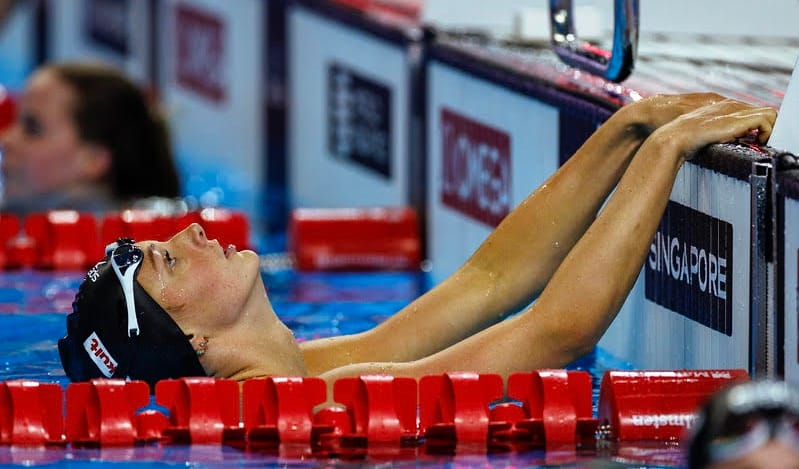
McIntosh's 2:01.99 and that would-be WR list above reminds us of many other achievements in the sport of swimming that remain unrecognised, for a variety of reasons - and, because guardians and governors have never found the courage and integrity to reach for reconciliation and reasonable justice, as described in the first two parts of our latest SOS FORUM mini-series:
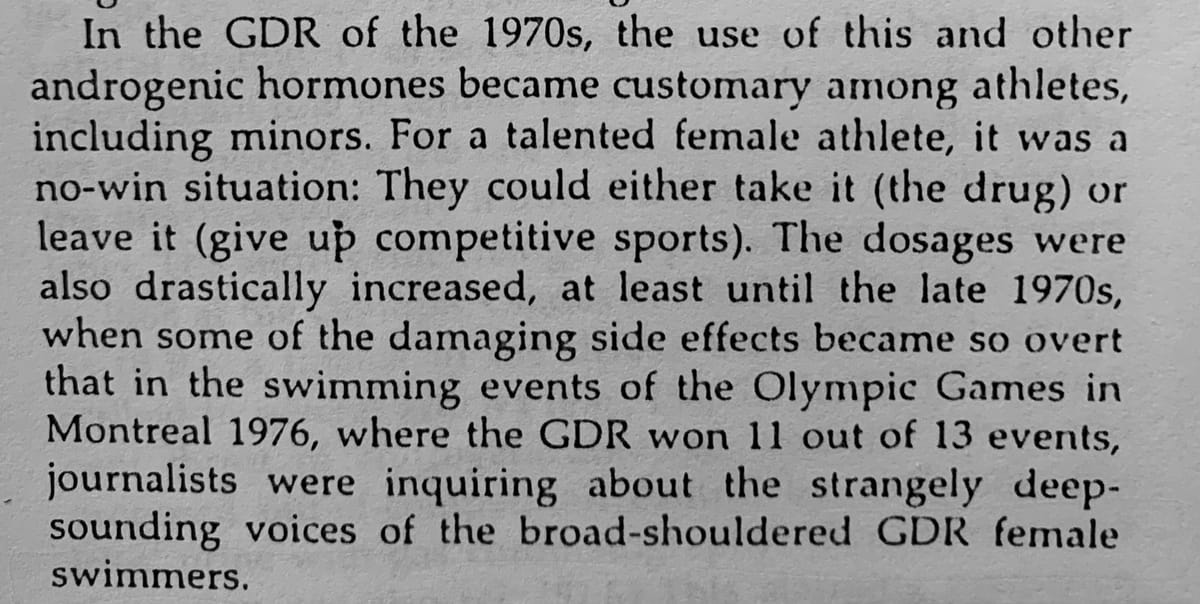

Schipper's 2:05.40 is now 60th on the all-time performances (multiple entries per swimmer, not just best times). The swims faster than the Australian's 2006 World record - including her own 2:03.41 shiny suits best for Rome 2009 gold and her 2:04.87 from semis at the same meet - include:
- 15 efforts in shiny suits
23 efforts in the 2020s
11 of the finest performances in history, unrecognised for just how good they were on the clock in their time: they include three 2:04 efforts and two 2:05.2 swims that form par of the impressive pantheon of Spain's Mireia Belmonte; efforts of 2:04 and 2:05 from Japan's Natsumi Hoshi, and a 2:04 from Australia's Madeline Groves; and a 2:05 from Jemma Lowe, of Great Britain, in 2011 - Belmonte - the 2:04s - 2016 Olympic gold; Worlds silver at the 2013 championships in Barcelona 0.19 behind Liu (for whom 2:04 was her best textile time); European gold in 2014; and the 2:05.2s - Olympic silver behind Jiao and Liu at London 2012; and Worlds gold in 2017
- Hoshi - the 2:04 - Japan Nationals, 2012; the 2:05, Olympic bronze behind Belmonte and Groves at Rio 2016
- Groves - the 2:04 - Olympic silver, Rio 2016
- Lowe - the 2:05: British Championships 2011
Meanwhile, Liu's 2:01.81 sits alongside China teammate Zhang Lin's staggering and still current 7:32.12 World record in the 800m freestyle, a time he clocked for the World titles at the Rome circus in 2009.
Both those Chinese efforts and global marks that have survived 16 years are outliers even in the context of shiny suits.
Here's the spread we're still looking at in the men's 800m freestyle all-time top 10:
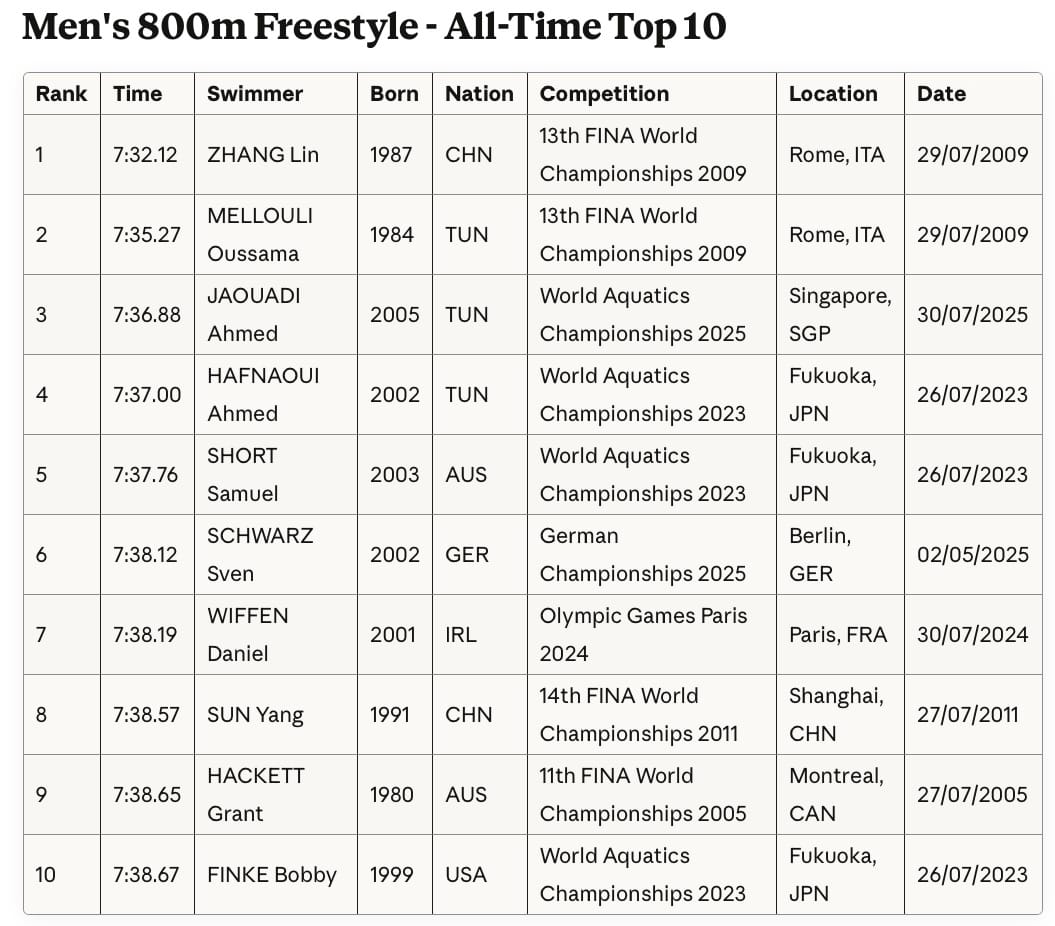
That's among all-time lists that continue to raise legitimate questions about how serious swim and anti-doping bosses are when it comes to seeking to write rules and take decisions that send the strongest-possible message that manipulation will not be rewarded.
THANK YOU TO PAID SUBSCRIBERS FOR SUPPORTING OUR WORK

